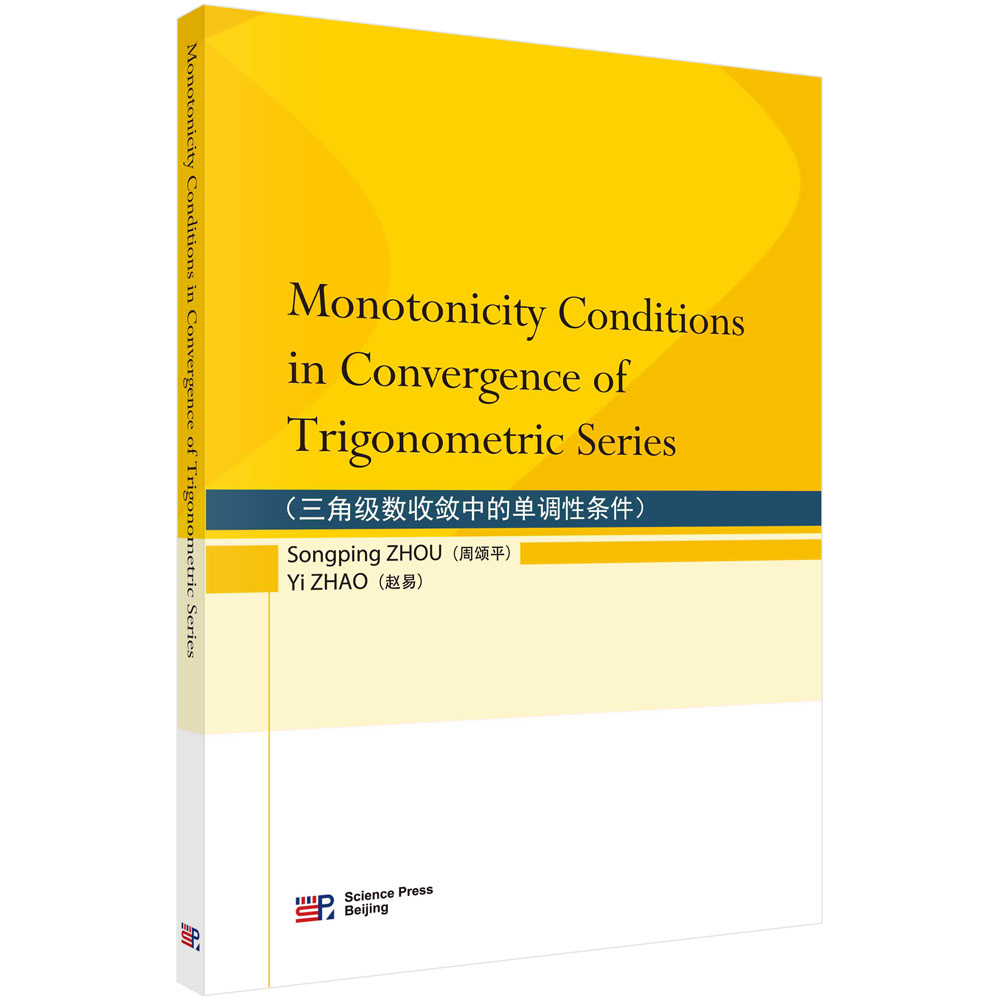
出版社: 科学
原售价: 118.00
折扣价: 93.30
折扣购买: 三角级数收敛中的单调性条件(英文版)
ISBN: 9787030692078

Chapter 1
Overview
1.1 Introduction
This book is designed to be a survey and an investigation on the monotonicity conditions setting on the coefficients of a trigonometric (or Fourier) series that guard its various convergence properties, as well as some related monotonicity topics.
The study of this topic is generally considered to start in 1916 when Chaundy and Jolliffe proved a necessary and sufficient condition for the uniform convergence of a sine series, in the case when its coefficients are positive and decreasing. This classical theorem, together with many other convergence results of trigonometric series under the monotone (decreasing) condition, has had some theoretical and practical applications and attracted a lot of attentions thereafter.
We begin by introducing some terminologies and notations that will be used throughout the book.
A series of the form
is said to be a trigonometric series. Its nth partial sum Sn(x) is denoted by
More generally, given a series with complex coefficients, its nth sum is also denoted by the same notation Sn(x), i.e.,
Let C2π be the space of all continuous functions f(x) of period 2π, real valued or complex valued, with norm
and Lp2π, 1 ≤ p < ∞, be the space of p power integrable functions f(x) of period 2π, with norm
In particular, L2π = L12π. When f ∈ L2π, the following formulae
or
define the Fourier coefficients, therefore, or, is said to be the Fourier series of f(x), denoted by
or
We denote its nth partial sum as Sn(f, x). From what will be illuminated in the book, we see that, a trigonometric series, even though its sum function is integrable, is not necessarily a Fourier series of the sum function. The difference between the symbols Sn(x) and Sn(f, x) deserves special emphasis thereby.
For x ∈ (0, 2π),
are the nth Dirichlet kernel and the nth conjugate Dirichlet kernel.
The following classical results are well known:
Lemma 1.1 Let x ∈ (0, π), then the estimates
and
hold for all n = 1, 2, .
Lemma 1.2 The estimates
and
hold for all n = 1, 2, , where M > 0 is some absolute constant.
As a standard symbol, write
A trigonometric series can converge or diverge. It can be a Fourier series or not a Fourier series. There is no inevitable connection between those two properties, though many simple series may possess both. For example, converges for all x, but it is not a Fourier series; on the other hand, we know that there exists a Fourier series which does not converge at any point.
However, the following result establishes some connections:
Theorem 1.1 If a trigonometric series converges to a finite integrable function f(x) at any point x except that on a countable set, then it is a Fourier series of f(x).
Sketch of Proof Denote by Df(x) the upper derivative of a function f(x) at a point x, and by D f(x) the lower derivative of f(x) at x, i.e.,
数学研究生,教师,科研人员